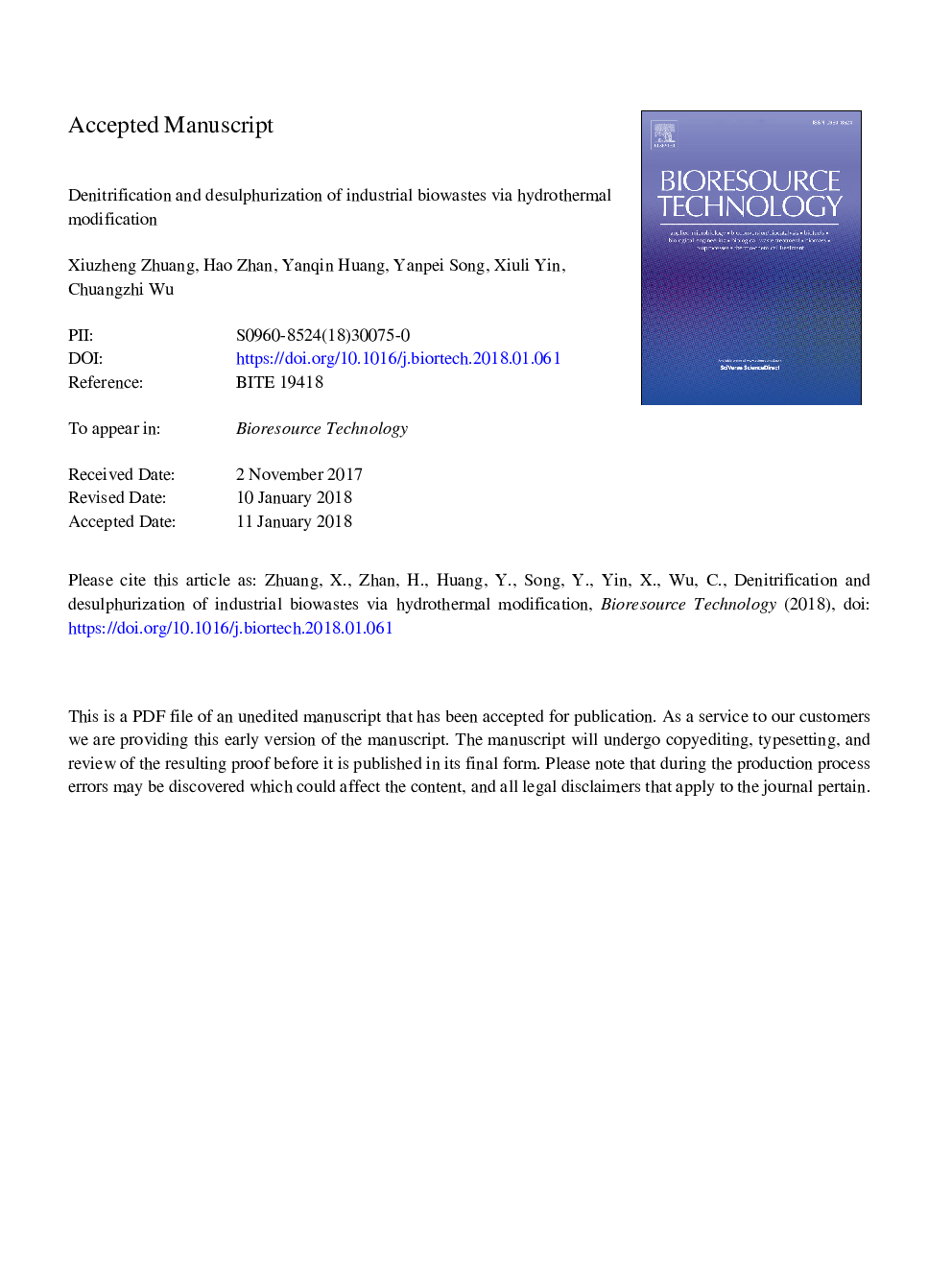| Article ID | Journal | Published Year | Pages | File Type |
|---|---|---|---|---|
| 7068220 | Bioresource Technology | 2018 | 35 Pages |
Abstract
In attempt to decrease NOX and SO2 emission from thermochemical utilization, three industrial biowastes (penicillin mycelia waste, sewage sludge and peat waste) contained high nitrogen (N) and sulfur (S) were chosen to investigate the denitrification and desulphurization of hydrothermal modification. The results demonstrated that hydrothermal modification destroyed the structure of N- and S-containing components, thereby altering their existed conformations. Inorganic-N (N-IN) and most of amino-N/polyamide-N (N-A) were enriched by liquid phase in the forms of NH4+-N and soluble organic-N (Org-N), respectively; subsequently, Org-N could further decompose to NH4+-N at higher temperature. Residual N in hydrochars was converted from N-A to heterocyclic-N (pyrrolic-N, pyridinic-N and quaternary-N) via hydrolysis and cyclization. Similarly, over 60% of S was remove form biowastes at 240â¯Â°C. In solid phase, part of organic-S was altered to thiophenes-S after modified, while the remainder was transformed to inorganic-S; but the variation of inorganic-S in hydrochars strongly affected by its specific species.
Related Topics
Physical Sciences and Engineering
Chemical Engineering
Process Chemistry and Technology
Authors
Xiuzheng Zhuang, Hao Zhan, Yanqin Huang, Yanpei Song, Xiuli Yin, Chuangzhi Wu,
